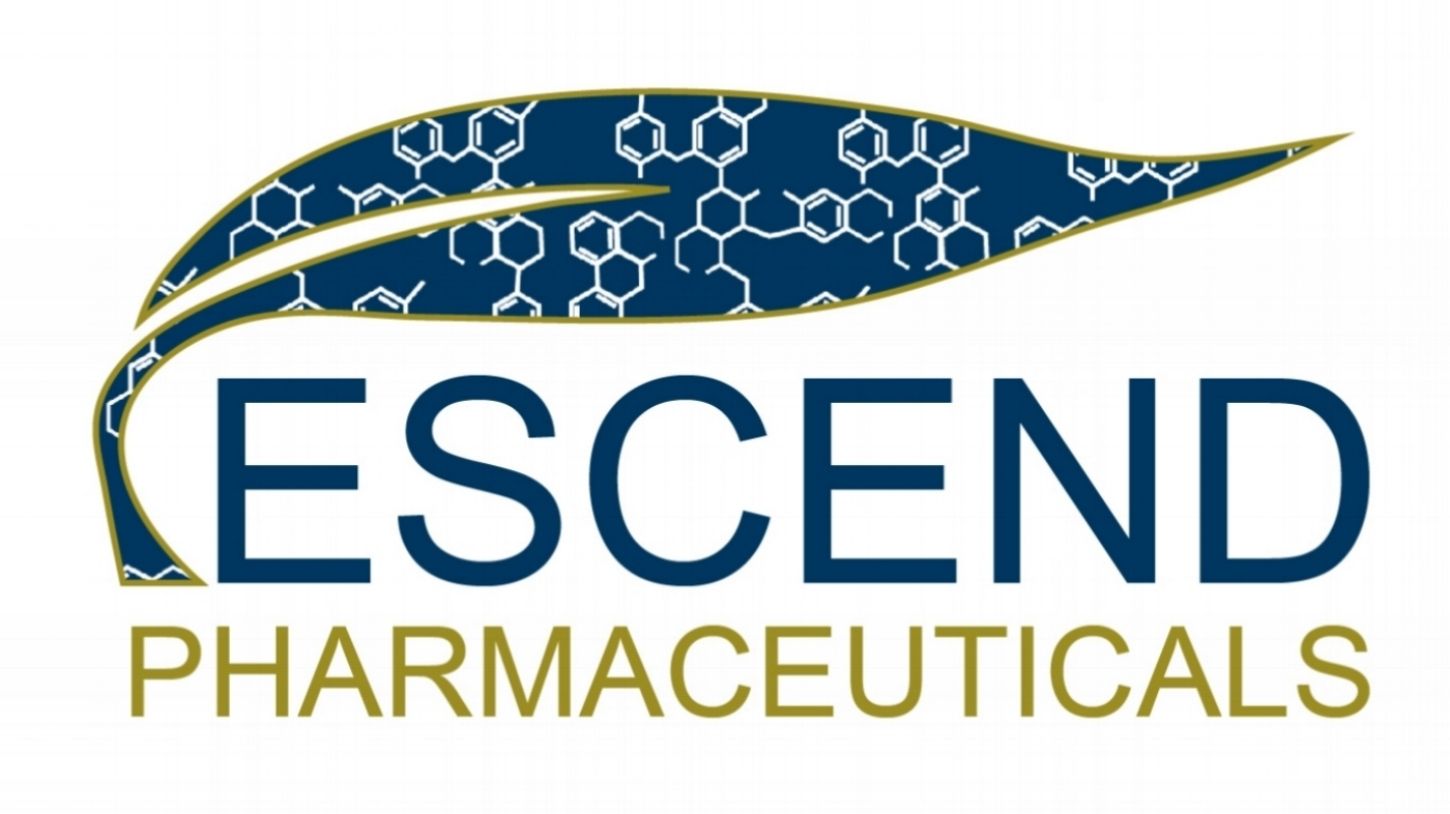预约演示
更新于:2025-05-07

Escend Pharmaceuticals, Inc.
更新于:2025-05-07
概览
标签
肿瘤
消化系统疾病
内分泌与代谢疾病
小分子化药
疾病领域得分
一眼洞穿机构专注的疾病领域
暂无数据
技术平台
公司药物应用最多的技术
暂无数据
靶点
公司最常开发的靶点
暂无数据
| 排名前五的药物类型 | 数量 |
|---|---|
| 小分子化药 | 2 |
| 排名前五的靶点 | 数量 |
|---|---|
| CTNNB1(连环素β1) | 1 |
| CCND1 x c-Myc | 1 |
关联
3
项与 Escend Pharmaceuticals, Inc. 相关的药物靶点 |
作用机制 CTNNB1抑制剂 |
非在研适应症- |
最高研发阶段临床1/2期 |
首次获批国家/地区- |
首次获批日期- |
作用机制 CCND1抑制剂 [+1] |
在研适应症 |
非在研适应症- |
最高研发阶段临床前 |
首次获批国家/地区- |
首次获批日期- |
靶点- |
作用机制- |
在研机构- |
在研适应症- |
最高研发阶段无进展 |
首次获批国家/地区- |
首次获批日期- |
100 项与 Escend Pharmaceuticals, Inc. 相关的临床结果
登录后查看更多信息
0 项与 Escend Pharmaceuticals, Inc. 相关的专利(医药)
登录后查看更多信息
1
项与 Escend Pharmaceuticals, Inc. 相关的文献(医药)2016-12-02·Blood
Inhibition of CML Stem Cells with an Alkaloid That Reduces β-Catenin
作者: Bates, Saira ; Shan, Yi ; Michaels, Shawnya J. ; Li, Shaoguang ; DeSouza, Ngoc
2
项与 Escend Pharmaceuticals, Inc. 相关的新闻(医药)2024-06-20
MENLO PARK, Calif., June 20, 2024 /PRNewswire/ -- Escend Pharmaceuticals, Inc., a privately held oncology company, announced today a poster presentation with initial data from the Australasian Leukaemia and Lymphoma Group's (ALLG) investigator-initiated Phase I/II platform study (MYDAS-T MDS05 domain 1) evaluating ES-3000 alone and in combination with ASTX727 at European Hematology Association (EHS) in Madrid, Spain.
The poster is entitled, 'Combining oral Wnt/β catenin/inflammasome pathway inhibitor, a bis-benzylisoquinoline alkaloid (ES-3000) with oral decitabine/cedazuridine (ASTX727)* as a treatment strategy for myelodysplasia'. The primary objectives of the initial phase of the trial are to assess the safety profile of ES-3000 and determine the recommended phase 2 dose and dosing schedule of ES-3000 in combination with fixed-dose decitabine/cedazuridine (ASTX727). The results indicate a response in 40% of evaluable patients who received ES-3000 as a single agent. The dose-limiting toxicities as per BION modeling allowed the study to dose escalate.
A copy of the poster is available at Escend Pharmaceuticals' website
About ES-3000
ES-3000 is a small molecule, oral investigational product that reduces leukemic stem cells by β-catenin and Calmodulin protein-dependent kinase II gamma (CamKIIγ). ES-3000 is being developed for the treatment of myeloid malignancies including acute myeloid leukemia (AML), chronic myeloid leukemia (CML), and myelodysplastic syndrome (MDS).
About Escend
Escend's development strategy is to select drug candidates with established clinical safety that have not yet achieved US marketing approval and develop them for oncology based on new mechanism of action details, where their effects on specific cellular pathways can be leveraged for the development of novel therapeutics.
About Australasian Leukaemia and Lymphoma Group's (ALLG)
The Australasian Leukaemia and Lymphoma Group (ALLG) is Australia's and New Zealand's only collaborative clinical trial organisation that sponsors local investigator-initiated clinical trials. Established in 1973, the ALLG's membership of over 1,300 blood cancer health professionals at 94 networked sites includes haematologists, clinician researchers, scientists and nurses treating leukaemia, lymphoma, myeloma, myelodysplastic syndromes and other haematological malignancies. The ALLG plans, designs, conducts, monitors and publishes investigator initiated clinical trials to create better treatments and better lives for patients with blood cancers.
For further information about this press release, please contact Saira Bates ([email protected]) or visit
*Astex Pharmaceuticals study drug
SOURCE Escend Pharmaceuticals, Inc.
临床研究临床结果
2022-07-15
Escend announces IND clearance for ES-3000 phase I study in relapsed or refractory (R/R) acute myeloid leukemia (AML)
MENLO PARK, Calif., July 15, 2022 /PRNewswire/ -- Escend Pharmaceuticals, Inc., a privately held company focused on the development of small molecule therapeutics for oncology orphan diseases, announced today that the United States Food and Drug Administration (FDA) has cleared its investigational new drug (IND) application for its lead drug candidate, ES-3000 for a Phase I clinical trial in relapsed or refractory (R/R) acute myeloid leukemia (AML).
The primary aim of the Phase I study is to determine the safety and tolerability of ES-3000 in subjects with R/R AML. The FDA Office of Orphan Products Development has previously granted ES-3000 orphan designation for the treatment of acute myeloid leukemia (AML) and chronic myeloid leukemia (CML). The FDA orphan drug designation provides 7 years of marketing exclusivity and certain incentives, including federal grants, tax credits, and waiver of new drug application (NDA) fees.
"The IND clearance strengthens our deep commitment to the development of ES-3000, which can potentially offer a new treatment option for durable remissions and reduce relapse by targeting leukemic stem cells, which play a central role in resistance to therapy", said Saira Bates, MBA, Co-founder & CEO. "We are very excited to be able to initiate our US study. ES-3000 is a novel small molecule with promising pre-clinical data that supports targeting leukemic stem cells." said Dennis Brown, PhD, Co-founder & Chairman.
About ES-3000
ES-3000 is an orally bioavailable small molecule which ablates leukemic stem cells by reducing β-catenin expression through a novel mechanism of action. The Wnt/β-catenin pathway is critical for the survival of cancer stem cells. ES-3000 is also in development for the treatment of chronic myeloid leukemia (CML), myelodysplastic syndrome (MDS), and triple negative breast cancer (TNBC).
About Escend
Escend's development strategy is to select drug candidates with established clinical safety that have not yet achieved US marketing approval and match them to oncology orphan indications, where their effects on specific cellular pathways can be leveraged for the development of novel therapeutics.
SOURCE Escend Pharmaceuticals, Inc.
合作孤儿药小分子药物
100 项与 Escend Pharmaceuticals, Inc. 相关的药物交易
登录后查看更多信息
100 项与 Escend Pharmaceuticals, Inc. 相关的转化医学
登录后查看更多信息
组织架构
使用我们的机构树数据加速您的研究。
登录
或

管线布局
2026年01月07日管线快照
管线布局中药物为当前组织机构及其子机构作为药物机构进行统计,早期临床1期并入临床1期,临床1/2期并入临床2期,临床2/3期并入临床3期
临床前
1
1
临床2期
其他
1
登录后查看更多信息
当前项目
| 药物(靶点) | 适应症 | 全球最高研发状态 |
|---|---|---|
ES-3000 (Escend Pharmaceuticals) ( CTNNB1 ) | 骨髓增生异常综合征 更多 | 临床2期 |
ES-4000 ( CCND1 x c-Myc ) | 胰腺癌 更多 | 临床前 |
S-3000 | 乳腺癌 更多 | 无进展 |
登录后查看更多信息
药物交易
使用我们的药物交易数据加速您的研究。
登录
或

转化医学
使用我们的转化医学数据加速您的研究。
登录
或

营收
使用 Synapse 探索超过 36 万个组织的财务状况。
登录
或

科研基金(NIH)
访问超过 200 万项资助和基金信息,以提升您的研究之旅。
登录
或

投资
深入了解从初创企业到成熟企业的最新公司投资动态。
登录
或

融资
发掘融资趋势以验证和推进您的投资机会。
登录
或

生物医药百科问答
全新生物医药AI Agent 覆盖科研全链路,让突破性发现快人一步
立即开始免费试用!
智慧芽新药情报库是智慧芽专为生命科学人士构建的基于AI的创新药情报平台,助您全方位提升您的研发与决策效率。
立即开始数据试用!
智慧芽新药库数据也通过智慧芽数据服务平台,以API或者数据包形式对外开放,助您更加充分利用智慧芽新药情报信息。
生物序列数据库
生物药研发创新
免费使用
化学结构数据库
小分子化药研发创新
免费使用